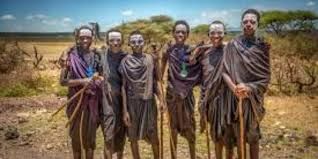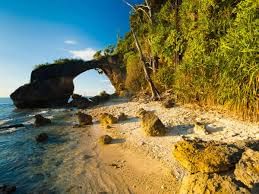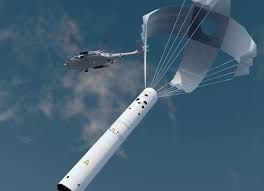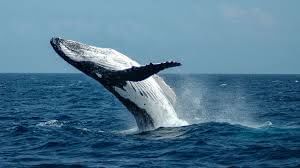UPSC Daily Current Affairs: 25 August 2024 | Current Affairs & Hindu Analysis: Daily, Weekly & Monthly PDF Download
GS1/Indian Society
Key Facts about Shompen Tribe
Source: The Hindu

Why in news?
The development of a port and airport in the pristine Nicobar Islands “will not disturb or displace” any of the Shompen, the Union Environment Minister said recently.
Overview of Shompen Tribe
- The Shompen are among the most isolated tribes on the planet.
- They are classified as one of the least studied Particularly Vulnerable Tribal Groups (PVTGs) in India.
- Their habitat is located in the dense tropical rainforests of Great Nicobar Island, part of the Andaman and Nicobar Islands.
- Approximately 95% of Great Nicobar Island is covered by rainforest.
Ecological Significance of Habitat
- The Shompen's habitat is recognized as an important biological hotspot.
- It includes two National Parks: Campbell Bay National Park and Galathea National Park, as well as the Great Nicobar Biosphere Reserve.
Population Statistics
- According to the 2011 Census, the estimated population of the Shompen was 229.
- The actual population remains unknown as many reside in the forest with minimal contact with outsiders.
Way of Life
- The Shompen are semi-nomadic hunter-gatherers.
- Their primary sources of livelihood include hunting, gathering, fishing, and some rudimentary horticulture.
- They live in small groups, and their territories are often marked by rivers that flow through the rainforest.
- Being nomadic, they establish temporary forest camps for a few weeks or months before relocating.
- Their staple food is the pandanus fruit, referred to as larop.
Language and Communication
- The Shompen have their own language, which consists of many dialects.
- Members of different bands often do not understand each other's dialects.
Physical Characteristics
- Shompen individuals are typically of short to medium stature.
- They have a round or broad head shape, a narrow nose, and a broad facial profile.
- They exhibit distinct Mongoloid features, including light brown to yellow-brown skin and slanted eyes.
Social Structure
- Shompen families are nuclear, consisting of a husband, wife, and their unmarried children.
- The family is led by the eldest male member, who oversees all activities involving women and children.
- Monogamy is the prevalent practice, although polygamy is also accepted.
GS3/Science and Technology
Antimatter
Source: Science Alert

Why in news?
Scientists have made a groundbreaking discovery by detecting the heaviest antimatter nucleus ever recorded, named antihyper hydrogen-4.
- This achievement occurred during particle accelerator experiments at the Relativistic Heavy Ion Collider (RHIC) located at Brookhaven National Laboratory in New York.
- The findings emerged from an extensive analysis of over 6 billion collision events, and this research could provide vital insights into the fundamental contrasts between matter and antimatter.
- Understanding these differences may help explain why our universe is predominantly composed of matter, despite the fact that both matter and antimatter were created in equal quantities during the Big Bang.
What is Antimatter?
Antimatter can be defined as a form of matter that is fundamentally similar to ordinary matter but possesses opposite electric charges. Often referred to as "mirror matter," it plays a crucial role in our understanding of the universe.
Definition:- Antimatter is a type of matter that has the same mass as ordinary matter but opposite electric charge.
- The antimatter equivalent of an electron, which has a negative charge, is called a positron, which carries a positive charge.
- Protons and neutrons have their antimatter counterparts known as antiprotons and antineutrons, respectively.
- Collectively, these particles are referred to as antiparticles.
Antimatter Formation and Properties:
Creation:- During the Big Bang, both matter and antimatter were produced in equal amounts.
- A slight imbalance allowed more matter to persist, leading to the formation of the universe as we see it today.
- Antimatter and matter cannot exist together for extended periods; when they come into contact, they annihilate each other.
- This annihilation releases immense energy, primarily in the form of gamma rays or elementary particles.
- Scientists are capable of creating antimatter particles in high-energy environments, such as those found in particle accelerators like the Large Hadron Collider (LHC) operated by CERN near Geneva.
- These high-energy collisions replicate conditions similar to those present shortly after the Big Bang, allowing for the temporary production of antimatter.
- Outside of laboratory settings, antiparticles are also produced naturally, though this occurs sporadically throughout the universe.
GS2/Governance
Great Nicobar Project
Source: Hindustan Times

Why in News?
Recently, the Union Ministry of Environment, Forest and Climate Change has assured that the project will not displace or disturb the indigenous tribes and that due consultations with tribal councils were conducted.
About the Great Nicobar Project:
- The Great Nicobar Project is a comprehensive development initiative aimed at fostering the overall growth of Great Nicobar Island, strategically located at the southern tip of the Andaman and Nicobar Islands.
- Approved by the Union Ministry of Environment, Forest and Climate Change in November 2022, it is part of a larger strategy to bolster India's strategic presence and infrastructure in the area.
- The project is planned to unfold over a span of 30 years in a phased approach.
Key objectives:
- Strategic importance: This initiative aims to counter the expansionist actions of neighboring countries, particularly China, while also safeguarding India's maritime interests by addressing illegal activities such as poaching.
- Infrastructure development: Valued at ₹72,000 crore, the project will include crucial infrastructure developments such as:
- International container trans-shipment terminal.
- Greenfield international airport with dual military-civilian purposes.
- Township development.
- 450 MVA power plant utilizing gas and solar energy.
- Geographical context:
- Location: Great Nicobar Island is the southernmost island in the Andaman and Nicobar group, divided from the Andaman Islands by the Ten Degree Channel. It hosts Indira Point, which is India’s southernmost point, situated less than 150 km from Indonesia.
- Ecosystem: The island is characterized by tropical wet evergreen forests, mountain ranges reaching up to 650 meters in height, and coastal plains. It also contains two national parks and a biosphere reserve, home to endangered species such as the leatherback sea turtle.
- Impact on Indigenous Tribes:
- Tribal population: The island is inhabited by the Shompen, a hunter-gatherer tribe, and the Nicobarese. Approximately 237 Shompen and 1,094 Nicobarese reside in a tribal reserve of 751 sq km, of which 84 sq km is proposed to be denotified for the project.
- Environmental and seismic considerations:
- Deforestation: An estimated 13,075 hectares of forest land, about 15% of the island's total area, is set for diversion, with nearly 64 lakh trees expected to be cut down.
- Seismic risks: This region is known for its seismic activity, having experienced a significant earthquake (9.2 on the Richter scale) in 2004. Experts believe that a similar large-scale event may not occur for another 400-750 years, although smaller quakes are likely. The project will comply with the National Building Code to ensure earthquake-resistant structures.
GS3/Science and Technology
What are Sonobuoys?
Source: Mint

Why in News?
The United States of America (USA) has recently sanctioned a government-to-government agreement worth USD 52.8 million for the sale of Anti-Submarine Warfare (ASW) Sonobuoys, which will be integrated into the Indian Navy's Romeo helicopters.
About Sonobuoys:
- Sonobuoys are small, expendable devices utilized in underwater acoustics and sonar systems.
- They are designed to detect and analyze sound in ocean environments, particularly for tracking submarines and other submerged objects.
- Sonobuoys are a fundamental technology for anti-submarine warfare, crucial for tracking potentially hostile submarines both in the open ocean and coastal regions.
- The information gathered by these systems aids in enabling precise attacks using air-launched torpedoes.
- Historically, sonobuoys were first deployed during World War II to locate German U-boats.
Deployment:
- Sonobuoys are deployed by dropping them into the ocean from aircraft that are launched from ships or submarines.
- Once deployed, they sink to a predetermined depth and begin listening for acoustic signals, which helps to identify potential submarine threats.
- Multiple sonobuoys can be deployed in a strategic pattern to accurately determine the location of a target.
Types of Sonobuoys:
- Passive Sonobuoys: These devices quietly listen for and record sounds without emitting any signals. They utilize a hydrophone to capture sound energy from targeted sources.
- Active Sonobuoys: These emit sound pulses and analyze the return echoes to detect and locate targets. They employ a transducer to send out acoustic signals.
- Special Purpose Sonobuoys: These provide environmental data, such as water temperature and ambient noise levels.
Components:
- A typical sonobuoy features a buoyant housing, which can be cylindrical or spherical.
- It is equipped with sensors to detect acoustic signals, a battery or power source, and a communication system, such as a radio transmitter, to relay information back to the host platform (e.g., aircraft or ship).
Other Applications:
- Beyond their primary function in anti-submarine warfare, sonobuoys are also used in scientific research and environmental studies.
- They can assist in studying the behavior of marine creatures, including whales.
GS2/Polity
Unified Pension Scheme
Source: Economic Times

Why in news?
The Union Cabinet has approved a new Unified Pension Scheme (UPS) for Central government employees, which guarantees a pension amounting to 50% of the average salary earned during the last 12 months of service. This scheme closely resembles the Old Pension Scheme (OPS), ensuring a lifelong monthly pension for government employees equivalent to half of their last salary drawn. Furthermore, for current employees covered under the National Pension System (NPS), participation in this scheme will be optional.
Difference between NPS and OPS
- Overview of OPS
- The Old Pension Scheme (OPS) provides pensions to government employees based on their last drawn salary.
- For instance, if a government employee's basic monthly salary at retirement is Rs 10,000, they would receive Rs 5,000 as pension.
- Pension amounts under OPS also increase with government-announced dearness allowance (DA) hikes.
- This scheme was discontinued by the Central government in 2003 due to financial sustainability concerns.
- Concerns regarding OPS
- The primary issue with OPS was that pension liabilities were unfunded, meaning there was no dedicated financial corpus for pension payments.
- The government's budget allocated funds for pensions annually, but there was no strategic plan for future payouts.
- This 'pay-as-you-go' model raised inter-generational equity issues, placing the financial burden of current pensions on future generations.
- The Reserve Bank of India (RBI) has flagged the return to OPS by various states as a significant fiscal concern.
- States such as Himachal Pradesh, Jharkhand, Punjab, Chhattisgarh, and Rajasthan have recently announced their intention to revert to OPS.
- New Pension Scheme (NPS)
- Introduced in April 2004 as a replacement for OPS, NPS is accessible to employees from public, private, and unorganised sectors, excluding armed forces personnel.
- NPS encourages regular contributions to a pension account during employment, allowing retirees to withdraw a portion of their corpus and receive monthly pension payments thereafter.
- The Pension Fund Regulatory and Development Authority (PFRDA) oversees NPS.
- Unlike OPS, NPS does not guarantee fixed returns as it is subject to market fluctuations.
- Features of the Unified Pension Scheme (UPS
- The UPS will be effective from April 1, 2025, and will be available to employees with a minimum of 25 years of service.
- Key benefits include:
- A minimum pension of ₹10,000 for those with at least 10 years of service.
- Adjustments linked to inflation.
- A family pension amounting to 60% of the employee's pension after their death.
- The government plans to increase its contribution to the pension corpus from 14% to 18.5% of the basic pay and dearness allowance, while employee contributions will remain at 10%.
- The scheme also allows for a lump sum withdrawal at retirement and divides the pension corpus for investment, with a guaranteed pension based on a default investment strategy.
- Participation in the UPS will be optional for current employees under the NPS.
GS3/Science and Technology
What is the Vigyan Dhara Scheme?
Source: Economic Times

Why in news?
The Union Cabinet has recently approved the continuation of three existing umbrella schemes, consolidating them into a single central sector initiative known as "Vigyan Dhara," which falls under the purview of the Department of Science and Technology (DST).
About Vigyan Dhara Scheme:
- The Vigyan Dhara Scheme is a comprehensive initiative that unifies three distinct umbrella schemes.
- The primary components of this scheme include:
- Institutional and Human Capacity Building in Science and Technology (S&T)
- Research and Development
- Innovation and Technology Development Deployment
- This unification is intended to streamline operations and enhance the S&T capabilities of India.
- The proposed budget for implementing the Vigyan Dhara Scheme is ₹10,579.84 crore, covering the 15th Finance Commission period from 2021-22 to 2025-26.
- The merger aims to improve efficiency in fund allocation and ensure better coordination among the various sub-schemes and programs.
- The main goal of the Vigyan Dhara scheme is to foster S&T capacity building, alongside promoting research, innovation, and technology development to strengthen the Science, Technology, and Innovation ecosystem in India.
Components:
- The scheme seeks to encourage research in several key areas, including:
- Basic research with access to international mega facilities
- Translational research focusing on sustainable energy, water, and other critical fields
- Collaborative research facilitated through international bilateral and multilateral partnerships
- It aims to develop a robust human resource base to enhance the science and technology landscape of the nation.
- Efforts will be made to increase the Full-Time Equivalent (FTE) researcher count in the country.
- Particular initiatives will be implemented to boost women's participation in S&T, striving for gender equality in Science, Technology, and Innovation (STI).
- All programs under the Vigyan Dhara scheme will align with the five-year objectives of the DST, contributing to the vision of Viksit Bharat 2047.
- The Research and Development component will be synchronized with the Anusandhan National Research Foundation (ANRF).
GS2/Polity
Why is Sanction for Prosecution Needed?
Source: The Hindu

Why in news?
Sanction for prosecuting a public servant is a crucial legal requirement designed to protect officials from frivolous or malicious lawsuits. This ensures that decisions made during their official duties are not constantly challenged in court without valid grounds. The need for sanction is embedded in various legal provisions, including Section 197 of the Code of Criminal Procedure (CrPC) and Section 19 of the Prevention of Corruption Act (PCA).
Background (Context of the Article)
- Sanction for prosecution serves as a protective measure for public servants against unjust legal actions.
- This legal requirement prevents the misuse of law to harass officials for their legitimate decisions made in the course of duty.
Legal Framework (CRPC, PCA, Role of Governor, Judicial Interpretation, etc.)
- Both the CrPC and PCA mandate that a competent authority must grant permission before a public servant can be prosecuted.
- This requirement aims to ensure that actions taken by public officials during their official duties are not subject to immediate legal scrutiny without proper grounds.
- Recent amendments, such as those in the Bharatiya Nagarik Suraksha Sanhita (BNSS), which replaced the CrPC, have retained the sanction provisions.
- Amendments to the PCA in 2018 have made it mandatory to obtain government approval even to initiate an investigation, underscoring the importance of sanction before prosecution.
Role of the Governor in Cases Against a Chief Minister:
- The Governor plays a pivotal role in sanctioning prosecution against the Chief Minister, given their authority to dismiss them.
- There is ongoing debate regarding whether the Governor should exercise this power independently or follow the advice of the Council of Ministers.
Supreme Court's Stance
- In the A.R. Antulay case, the Supreme Court highlighted that the Governor must use discretion rather than simply adhere to the Council's advice when deciding on prosecution sanctions against a Chief Minister.
- This discretionary power is essential for maintaining a balance of power and ensuring justice is served.
Judicial Interpretations:
- There have been instances where Governors exercised their discretion to grant sanctions despite the Council of Ministers' recommendations.
- For example, in a notable case in Madhya Pradesh, the Supreme Court upheld the Governor's decision to grant sanction against Ministers, even when the Council found no grounds for prosecution.
- The Court emphasized that when the Council's decision appears biased or unreasonable, the Governor's independent action is justified.
Conclusion:
- Sanction for prosecution acts as a vital safeguard in the Indian legal framework, protecting public servants from unwarranted legal actions while ensuring accountability when there is substantial evidence of wrongdoing.
- The Governor's role, especially in cases involving high-ranking officials like the Chief Minister, is crucial for maintaining this equilibrium.
- Judicial support for the Governor's discretionary powers reinforces the necessity of an impartial and fair legal process.
GS3/Science and Technology
H1N1
Source: The Hindu

Why in news?
India has reported over 9,000 H1N1 cases and 178 deaths due to influenza A (H1N1), also known as swine flu, by the end of July 2024.
About H1N1 Influenza:
- Nature of virus: H1N1 is a subtype of the Influenza A virus, which is commonly referred to as the swine flu virus. It is capable of infecting both humans and pigs, primarily leading to respiratory illnesses.
- Transmission: The virus is spread through respiratory droplets released when an infected person coughs, sneezes, or talks. Additionally, it can be contracted by touching surfaces contaminated with the virus.
- Contagious period: Individuals infected with H1N1 can spread the virus from one day before symptoms appear until approximately four days after symptoms begin. Children and those with compromised immune systems may remain contagious for a longer duration.
- First case in India: The first confirmed case of H1N1 in India was reported in May 2009. Since that time, the virus has led to several outbreaks, with significant case numbers noted in the years 2021, 2022, and 2023.
Current scenario:
- Affected states: The states with the highest mortality rates from H1N1 include Punjab (41 deaths), Kerala (34 deaths), and Gujarat (28 deaths). The most cases have been reported in Delhi, Gujarat, and Kerala.
- Comparison: The last major spike in H1N1 cases occurred in 2022, with 13,202 reported cases and 410 deaths.
Recent developments:
- New Strain: Researchers at the National Institute of Virology in Pune have identified that the virus has undergone point mutations, resulting in the emergence of a new strain called the Michigan strain, which has replaced the previously dominant California strain. This change is associated with the increasing number of cases and deaths observed in 2024.
- Mutation impact: Although the overall virulence of the virus has not significantly changed, these mutations have made previous vaccinations less effective against the new Michigan strain.
GS3/Environment
Key Facts about Humpback Whales
Source: Forbes

Why in news?
Researchers have now found that humpback whales do not just create the ‘bubble-nets’ but they manipulate this unique tool in a variety of ways to maximise their food intake.
- About Humpback Whales:
- Species Characteristics: Humpback whales are among the larger whale species.
- Scientific Name: Their scientific name is Megaptera novaeangliae.
- Name Origin: The humpback whale gets its name from the distinctive hump on its dorsal fin and the unique shape of its back when it dives.
- Global Distribution: They inhabit all oceans worldwide, known for their extensive migratory patterns.
- Migration Patterns: Humpbacks undertake long migrations, traveling from polar feeding grounds in summer to tropical or subtropical breeding areas in winter.
- Physical Features:
- Humpback whales typically measure between 12 to 16 meters in length and can weigh around 36 metric tons.
- They have a primarily black or grey coloration with white undersides on their flukes, flippers, and bellies.
- The scientific name Megaptera translates to "large-winged," highlighting their long, wing-like flippers, which can be one-third of their total body length.
- They possess large knobs on their heads, jaws, and bodies, with each knob having one or two associated hairs.
- Feeding Behavior:
- Humpbacks are known for their social feeding habits, often gathering in large groups.
- They are renowned for their singing ability, with male humpbacks producing songs that can be heard up to 20 miles away.
- Their unique feeding technique, called bubble netting, involves exhaling bubbles while swimming in a spiral beneath a dense patch of food, creating a 'curtain' that traps prey.
- Lifespan: Humpback whales can live for 80 to 90 years.
- Conservation Status: According to the IUCN Red List, they are classified as Least Concern.
GS3/Science and Technology
What is BioE3 (Biotechnology for Economy, Environment and Employment) Policy?
Source: The Hindu

Why in news?
The Union Cabinet has recently given its approval to the 'BioE3' Policy, which aims to enhance high-performance biomanufacturing within the Department of Biotechnology.
About BioE3 (Biotechnology for Economy, Environment and Employment) Policy:
- The policy will be overseen by the Department of Biotechnology.
- It focuses on promoting high-performance biomanufacturing.
- High-performance biomanufacturing involves producing a variety of products, ranging from medicines to materials.
- This initiative aims to tackle agricultural and food-related challenges while advancing the manufacturing of bio-based products through cutting-edge biotechnological processes.
- The BioE3 Policy will provide innovation-driven support for research, development, and entrepreneurship across various thematic sectors.
- By establishing biomanufacturing and bio-AI hubs along with biofoundries, the policy intends to accelerate technology development and commercialization.
- It will prioritize regenerative bioeconomy models that foster green growth.
- This initiative is expected to enhance India's skilled workforce and significantly boost job creation.
To meet national priorities, the BioE3 Policy will concentrate on several strategic and thematic sectors:
- High-value bio-based chemicals
- Biopolymers
- Enzymes
- Smart proteins
- Functional foods
- Precision biotherapeutics
- Climate-resilient agriculture
- Carbon capture and utilization
- Marine and space research
|
38 videos|5258 docs|1111 tests
|
FAQs on UPSC Daily Current Affairs: 25 August 2024 - Current Affairs & Hindu Analysis: Daily, Weekly & Monthly
| 1. What is the significance of the Shompen Tribe in the context of the Antimatter project? |  |
| 2. How does the Great Nicobar Project tie into the development of the Unified Pension Scheme? |  |
| 3. What role do Sonobuoys play in the Vigyan Dhara Scheme? |  |
| 4. Why is obtaining sanction for prosecution necessary in the context of H1N1? |  |
| 5. How does the BioE3 Policy aim to promote sustainable development through biotechnology? |  |





















